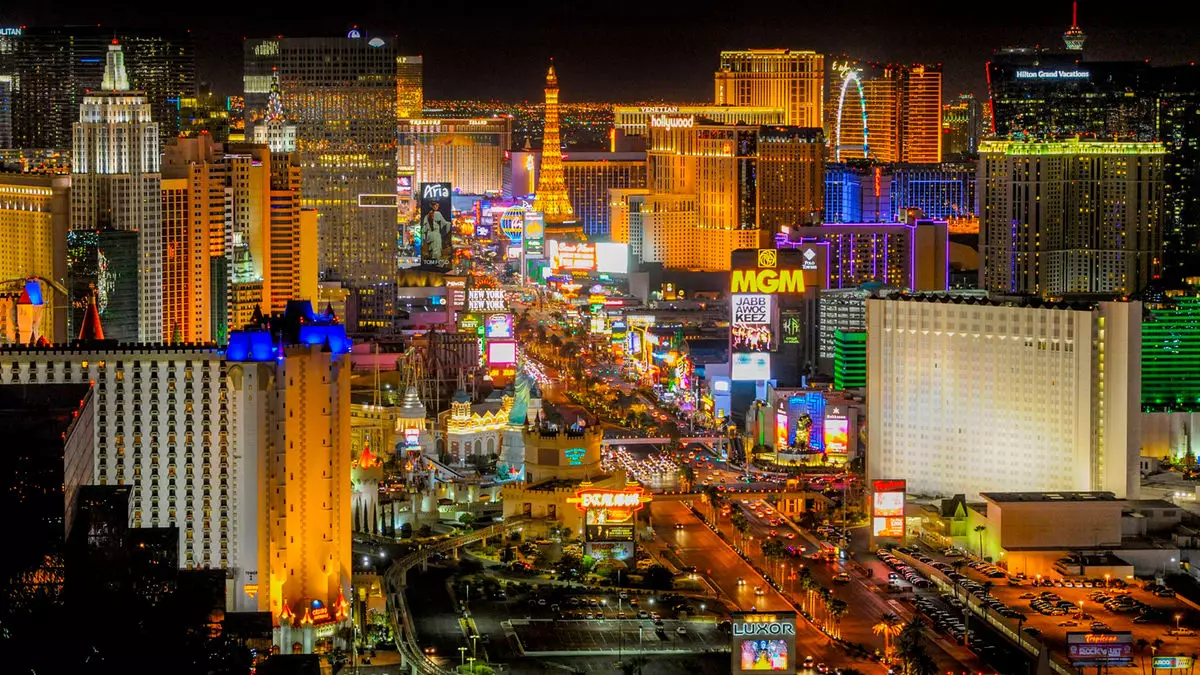March 2024 marked a significant turning point for Las Vegas, as the city reported a 7.8% drop in visitation. This decline exemplifies the difficult circumstances surrounding tourism in the city for the third consecutive month, signaling alarming trends for the future. What makes these numbers even more striking is that they follow an 11.9% drop in February, a month that is typically robust due to the Super Bowl’s draw. It’s clear that the exciting events we often associate with Las Vegas are not immune to the broader fluctuations driven by current economic and political climates.
This downturn is particularly concerning because it is reminiscent of challenges faced during the early pandemic in 2020. With March registering around 3.4 million visitors, it is evident that the appeal of Las Vegas is waning, at least temporarily. Factors influencing this decrease include less dynamic event schedules and the ambiguous impacts of shifting federal policies affecting both international and domestic travel. The question looms large: can Las Vegas adapt and evolve to recapture the attention of travelers worldwide?
Conventions: A Resilient Market Segment
Amid the overall visitation slump, convention attendance emerged as a surprising beacon of hope, with participation increasing by 10.2% to 533,900. Events such as the Healthcare Information & Management Systems Society conference, which attracted a staggering 48,000 attendees, played a crucial role in this growth. While leisure tourism may face challenges, the resilience shown by the convention sector suggests that Las Vegas continues to attract businesses and professionals eager to engage in face-to-face interactions.
As seen in the numbers, the average daily room rate also saw an increase, arriving at $183.86. This indicates that while fewer tourists may be flocking to the famed Strip, those who do are likely willing to spend more on their experience. Hotels and casinos can take encouragement from this statistic, as it may reflect a willingness among certain demographics to invest significantly when visiting the city.
Visitor Metrics and the Broader Implications
Looking at the first quarter of 2025, the Las Vegas Convention and Visitors Authority (LVCVA) reported a chilling 6.9% decrease in visitor volume, with total attendance down to approximately 9.7 million. Concurrently, convention attendance quietly ebbed by 1.6%. These metrics collectively suggest the need for a robust strategic response from the LVCVA and city officials.
One of the more concerning implications of this downward trend relates to hotel occupancy rates. The reported decline in occupancy by 0.9 percentage points signals a tightening market that places pressure on hotel profits and long-term growth trajectories. If this shift continues, the economic mood in Las Vegas may dampen considerably, affecting not just hotels but also restaurants, shops, and entertainment venues reliant on a steady influx of tourists.
International Impacts and Future Outlook
The overall drop in passenger traffic at Harry Reid Airport adds another layer of complexity to the situation, particularly as it dipped by 3.9% in March. The trends here are alarming, especially with dramatic reductions in travel from key partners like Canada and Mexico. The hesitation of international travelers appears to be influenced by several factors, including heated political rhetoric and anticipated tariffs.
Speculation abounds regarding the motivations of these potential visitors. Analysts have pointed to the chilling effects on consumer confidence stemming from current geopolitical landscapes. Jeremy Aguero, a principal analyst at Applied Analysis, has underscored the fact that diminishing foreign travel could pose severe challenges for Las Vegas. Should these trends persist, the city might find itself grappling with sharper declines in room tax revenue, potentially resulting in a diminished budget for the LVCVA—projected at a 5% decline, totaling an $18 million loss.
The projections by LVCVA president Steve Hill indicate a cautious attitude towards future growth. Hill notably described this forecast as “conservative,” suggesting a recognition of the turbulence surrounding Las Vegas’s appeal. While he has indicated optimism by stating that “one month does not make a trend,” there is an underlying anxiety about international visitation’s potential decline, leaving stakeholders to wonder how to adapt in light of shifting global dynamics.
As Las Vegas faces these challenges, the city’s heart still beats with resilience. A culture founded on reinvention may well be the key for Las Vegas in navigating these turbulent waters ahead.


Leave a Reply